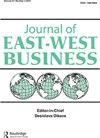Determinants of Publicly-Listed Firms’ Liquidity: Evidence from French and Taiwanese Banks
IF 0.9
Q4 BUSINESS
引用次数: 0
Abstract
Abstract This study investigates the effects of 7 internal corporate factors on the liquidity of 30 French and 30 Taiwanese banks and uses the Quick Ratio (LIQ) as a liquidity proxy using quarterly data from 2012 to 2018. The analysis employs multiple linear panel regression models, namely, Ordinary Least Squares (OLS); and both Fixed Effects (FE), and Random Effects (RE) are used as robustness tests. This research examines financial leverage (LEV), size (SZ), return on total assets (ROTA), operating profit (OP), customer loans and bank loans (CLBL), return on equity (ROE), and working capital ratio (WCR) as possible factors influencing a bank’s liquidity. Findings show that banks from both countries do not exhibit many similarities except that SZ positively affects LIQ. For French banks and all banks combined, LEV and ROTA have the same negative relationship with LIQ, whereas WCR has a positive relationship. However, these ratios do not show any significance for Taiwanese banks. Bigger French banks mostly show different results from smaller French banks. LEV and ROE positively affect LIQ, and WCR negatively affects LIQ for bigger French banks, while the opposite is true for smaller French banks. However, both LIQ is negatively influenced by ROTA. Bigger Taiwanese banks show a similar and negative influence of CLBL and WCR on LIQ with smaller Taiwanese banks. This paper provides original empirical evidence in examining financial factors that management can use to better understand changes in a bank’s liquidity. It also contributes to the literature by understanding the different effects of corporate variables on the liquidity of French and Taiwanese banks.上市公司流动性的决定因素:来自法国和台湾银行的证据
摘要本研究利用2012-2018年的季度数据,调查了7个内部企业因素对30家法国和30家台湾银行流动性的影响,并使用快速比率(LIQ)作为流动性指标。该分析采用了多个线性面板回归模型,即常最小二乘(OLS);并且固定效应(FE)和随机效应(RE)都被用作鲁棒性测试。本研究考察了金融杠杆(LEV)、规模(SZ)、总资产回报率(ROTA)、营业利润(OP)、客户贷款和银行贷款(CLBL)、净资产收益率(ROE)和营运资本比率(WCR)等可能影响银行流动性的因素。研究结果表明,除了SZ对LIQ有正向影响外,两国银行没有表现出太多相似之处。对于法国银行和所有银行的合并,LEV和ROTA与LIQ有相同的负相关关系,而WCR有正相关关系。然而,这些比率对台湾银行来说并没有任何意义。法国大银行的业绩大多与法国小银行不同。法国大型银行的LEV和ROE对LIQ产生积极影响,而WCR对LIQ则产生负面影响,而法国小型银行则相反。然而,两种液化石油气都受到ROTA的负面影响。较大的台湾银行表现出与较小的台湾银行类似的CLBL和WCR对LIQ的负面影响。本文为研究金融因素提供了原始的经验证据,管理层可以利用这些证据来更好地了解银行流动性的变化。通过了解企业变量对法国和台湾银行流动性的不同影响,它也为文献做出了贡献。
本文章由计算机程序翻译,如有差异,请以英文原文为准。
求助全文
约1分钟内获得全文
求助全文
来源期刊

Journal of East-West Business
BUSINESS-
CiteScore
2.10
自引率
26.70%
发文量
19
期刊介绍:
Journal of East-West Business is a quarterly journal that deals with contemporary and emerging aspects of business studies, strategies, development, and practice as they relate to the Russian Federation, the new republics of the Commonwealth of Independent States, and Eastern/Central Europe-and business relationships with other countries of the world. The Journal of East-West Business is international in scope and treats business issues from comparative, cross-cultural, and cross-national perspectives. The journal features an Editorial Advisory Board that represents the Russian Federation, Eastern/Central European, and Baltic states in this new business arena.
 求助内容:
求助内容: 应助结果提醒方式:
应助结果提醒方式:


